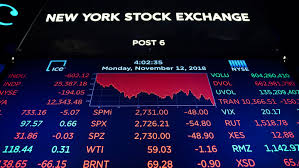In a significant turn of events, the USA's S&P 500 has reached an all-time high today, marking a momentous milestone in the world of finance. Investors and analysts alike are closely monitoring the developments, and the implications of this record-breaking achievement are reverberating across global financial markets.
The S&P 500, a key benchmark for the U.S. stock market, comprises 500 of the largest publicly traded companies and is widely regarded as a barometer of the country's economic health. So, what factors have contributed to this historic peak?
1. **Economic Resilience:** Despite facing various challenges, the United States has demonstrated remarkable economic resilience. Fiscal and monetary policies, coupled with efficient vaccine distribution, have played a pivotal role in stabilizing the economy and fostering investor confidence.
2. **Corporate Earnings:** Robust corporate earnings have been a driving force behind the S&P 500's ascent. Many companies have adapted to changing market dynamics, embraced digital transformation, and showcased financial agility in navigating uncertainties, which has been reflected in their earnings reports.
3. **Technological Innovation:** The tech sector, which is well-represented in the S&P 500, continues to be a major contributor to its growth. Advancements in technology, including artificial intelligence, cloud computing, and innovative business models, have fueled investor optimism and driven the market to new heights.
4. **Global Recovery:** As the world recovers from the economic downturn caused by the COVID-19 pandemic, global markets are experiencing a collective resurgence. The interconnectedness of economies has contributed to the S&P 500's climb, as international investors seek opportunities in the U.S. market.
5. **Low Interest Rates:** The sustained low-interest-rate environment has incentivized investment in equities, as fixed-income returns remain relatively modest. Investors are searching for yield, and the stock market, with its potential for capital appreciation, becomes an attractive option.
However, it's essential to approach this record-breaking moment with a balanced perspective. Market fluctuations are inherent, and reaching an all-time high does not negate the possibility of future corrections. Investors should remain vigilant, diversify their portfolios, and stay informed about global economic trends.
In conclusion, the USA's S&P 500 reaching an all-time high is a testament to the resilience of the U.S. economy, corporate adaptability, and global recovery efforts. As the financial landscape continues to evolve, investors must stay informed and agile to navigate the dynamic nature of the markets.












